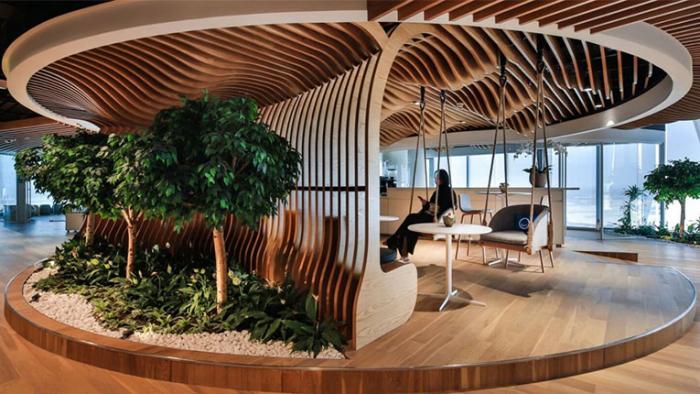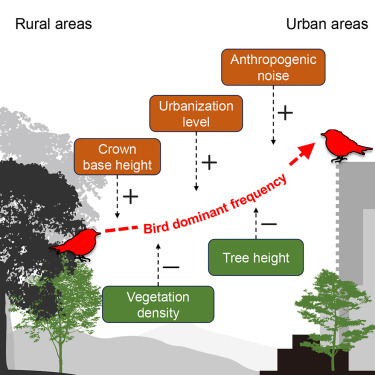The Use of Wood and Stone to Enhance Biophilic Aesthetics.
Incorporating natural elements such as wood and stone into design significantly enhances aesthetics while fostering a deeper connection to the environment.
These materials contribute warmth, texture, and authenticity, creating spaces that feel both inviting and grounded.
This article examines how wood and stone enhance biophilic aesthetics, outlines the numerous benefits of utilizing these sustainable materials, and provides practical guidance for their effective incorporation.
Readers will discover the most suitable types of wood and stone to create harmonious, nature-inspired spaces that invigorate their designs.
Why Use Wood and Stone in Biophilic Aesthetics?
.jpg_00.jpeg)
The integration of wood and stone within biophilic design is a critical practice that significantly enhances the sensory experience in both residential and commercial design environments.
This approach not only capitalizes on the inherent beauty of these natural materials but also promotes sustainability by utilizing eco-friendly resources that encourage a deeper connection to nature, fostering a sense of biophilia.
By incorporating organic textures and natural elements sourced from the natural world, architects and interior designers can create immersive environments that prioritize wellness design, comfort, and tranquility, reflecting principles of environmental psychology.
The employment of these natural materials enhances the overall visual appeal of spaces, fostering mindfulness and facilitating a harmonious interaction with the surrounding environment, thereby achieving design harmony.
How Do Wood and Stone Enhance Biophilic Aesthetics?
Wood and stone serve a crucial role in enhancing biophilic aesthetics by facilitating a connection between outdoor and indoor environments, effectively inviting nature into living spaces. These natural materials embody organic shapes and geological features that resonate with the inherent beauty of the environment, promoting tranquility and a strong sense of place.
The acoustic properties of wood, for example, absorb sound and impart warmth, creating inviting and comfortable spaces. In contrast, the solidity of stone provides a grounding effect, enhancing the overall sense of stability within a home. The tactile experience of engaging with these materials fosters a connection to nature, with textured surfaces contributing to a calming atmosphere that can improve overall well-being.
Design principles that emphasize visual continuity and fluid, natural patterns facilitate seamless transitions between spaces, further enhancing a cohesive aesthetic. This thoughtful integration not only elevates the physical environment but also supports emotional well-being, allowing occupants to feel more centered and at peace within their surroundings.
What are the Benefits of Incorporating Wood and Stone in Design?
Incorporating wood and stone into architectural and interior design presents a multitude of advantages that align with contemporary priorities surrounding sustainable design and wellness.
These materials, renowned for their durability and positive impact on livability, are not only visually appealing but also significantly enhance the overall health and well-being of occupants.
By emphasizing natural beauty and craftsmanship, they evoke an emotional response that enriches the user experience while strengthening the connection to the natural environment.
1. Natural and Sustainable Materials
The use of natural and sustainable materials, such as wood and stone, is essential in contemporary design, reflecting an increasing commitment to eco-friendly practices and ethical sourcing. These materials not only minimize environmental impact but also enhance the aesthetic quality of residential and commercial spaces.
By prioritizing these resources, designers play a pivotal role in reducing carbon footprints while simultaneously promoting biodiversity. The utilization of responsibly sourced wood and locally quarried stone can significantly reduce the demand for energy-intensive manufacturing processes, thereby contributing to a more sustainable future.
Incorporating sustainable materials often necessitates collaboration with artisans and skilled craftsmen who employ traditional techniques that honor local heritage. This approach not only supports local economies but also ensures that each piece conveys a unique narrative, making the design process both enriching and profoundly connected to the environment.
2. Aesthetic Appeal
The aesthetic appeal of wood and stone is unparalleled, as these materials offer a rich palette of colors, textures, and patterns that enhance the design of any space. Their distinctive properties facilitate creative expression in architecture and interior design, showcasing the artistry inherent in craftsmanship and materiality.
In terms of visual enhancement, these elements provide a remarkable variety of color palettes, ranging from deep, earthy tones to light, airy hues, effectively setting the mood of an environment. Surface finishes also play a crucial role, with options such as polished, matte, or reclaimed textures contributing depth and character to the overall design.
Moreover, organic shapes and forms promote a sense of fluidity and connection to nature, further enriching the visual landscape. By thoughtfully integrating these materials, one can achieve a harmonious balance that aligns aesthetic values with biophilic design principles, ultimately fostering tranquil spaces that encourage relaxation and well-being.
3. Connection to Nature
Wood and stone play a crucial role in establishing a profound connection to nature, facilitating an essential outdoor-indoor integration that enhances user experience in both living and working environments. By bridging the divide between the constructed and natural realms, these materials invite the external environment into interior spaces, fostering calming and restorative atmospheres.
This harmonious integration not only enhances aesthetic appeal but also cultivates a sense of tranquility and well-being among occupants. When biophilic elements are thoughtfully incorporated, they transform environments into sensory-rich experiences that promote mindfulness.
For example, the tactile qualities of wooden textures can evoke feelings of warmth and safety, while the cool solidity of stone can provide a grounding effect, thereby enhancing emotional health. Such environments create opportunities for individuals to engage more deeply with their surroundings, facilitating moments of reflection and connection that are essential for psychological resilience in today’s fast-paced world.
4. Improved Air Quality
.jpg_01.jpeg)
Incorporating wood and stone into design significantly contributes to enhanced air quality by facilitating natural ventilation and minimizing the presence of harmful chemicals typically associated with synthetic materials. This emphasis on health and well-being is crucial for creating environments that address both the physical and emotional needs of occupants.
The distinctive thermal properties of natural materials, including their capacity to absorb and release moisture, assist in regulating indoor humidity levels. This regulation is vital in preventing the proliferation of mold and allergens. Such measures not only improve air quality but also foster a more comfortable climate across various spaces, ranging from residential homes to commercial buildings.
Moreover, natural materials generally exhibit a lower environmental impact, resulting in healthier surroundings that promote overall wellness. As occupants engage with these materials, they may experience enhanced mental clarity and reduced stress levels, contributing to a more balanced and enjoyable living or working environment.
How to Incorporate Wood and Stone in Design?
Incorporating wood and stone into design is a multifaceted process that necessitates careful consideration of various design principles, including ecological architecture, to achieve both aesthetic and functional objectives.
By mastering the effective integration of these materials, designers can create environments that harmonize with nature and significantly enhance the overall user experience.
1. Use Natural Wood and Stone Elements
The incorporation of natural wood and stone elements is fundamental to developing environments that embody the beauty and richness of the natural world. These materials act as biophilic components that enhance aesthetic value while demonstrating exceptional craftsmanship.
Choosing appropriate types of wood, such as reclaimed oak or sustainably harvested teak, not only pays homage to environmental considerations but also ensures durability and imparts a distinctive character that evolves over time due to natural aging. In a similar vein, the inclusion of local stone varieties, such as granite or slate, can anchor a design within its geographical context, resulting in a truly unique creation.
To highlight the intrinsic qualities of these materials, the use of craftsmanship techniques—such as hand-rubbing to finish wood surfaces or employing precise stone masonry—can enhance their textures and colors. Additionally, sourcing materials locally not only minimizes environmental impact but also supports regional artisans, fostering community connections that are reflected within the design.
2. Create Natural Patterns and Textures
The creation of natural patterns and textures using wood and stone can significantly enhance the tactile experience within a space, encouraging occupants to engage more profoundly with their environment. By emphasizing organic textures and visual diversity, designers can evoke a sense of harmony and tranquility.
Incorporating a variety of natural materials, such as reclaimed wood in conjunction with smooth stone surfaces, not only cultivates intriguing contrasts but also promotes multisensory interaction and a tactile experience. Techniques such as hand-carving and the application of natural finishes accentuate the unique characteristics of each element, imparting an artisanal quality that is both authentic and timeless, evoking wood aesthetics and stone aesthetics.
These diverse textures work in harmony to stimulate a sense of groundedness and an emotional connection, fostering a bond with nature that is frequently diminished in contemporary design. Ultimately, these deliberate integrations not only enhance aesthetic appeal through the use of natural elements but also provide a meaningful experience that resonates emotionally with those who occupy the space, reinforcing the principles of biophilia and ecological architecture.
3. Utilize Natural Light and Shadows
The utilization of natural light and shadows, in combination with wood and stone materials, can result in dynamic spatial designs that significantly enhance the overall ambience of a space. This approach allows designers to leverage the unique properties of these materials, leading to a harmonious interplay of light and texture, contributing to both residential design and commercial design.
By strategically positioning windows and incorporating reflective surfaces, it is possible to maximize daylight exposure, thereby infusing the interior with visual warmth and creating an inviting atmosphere. Techniques such as the installation of skylights can further enrich a space with natural sunlight, while also accentuating the inherent variations in wood grain and stone patterns, thus enhancing the biophilic environments through effective design psychology.
Shadows are instrumental in adding depth and character, effectively breaking the monotony of a flat room. When light interacts with textured surfaces, it not only elevates the aesthetic appeal but also promotes a sense of tranquility, making areas feel more spacious and seamlessly connected to the outdoors, thus embodying principles of wellness design and nature connection.
4. Combine with Other Biophilic Elements
The integration of wood and stone with various biophilic elements constitutes a comprehensive design strategy that fosters environmental sustainability while enhancing the sensory experience. These additional elements may include natural landscaping, water features, and nature motifs, all of which further strengthen the connection to the outdoors and promote an immersive environment.
Incorporating features such as living walls or biophilic lighting can significantly elevate the aesthetic appeal and emotional impact of a space. Natural landscaping not only offers visual beauty but also supports local biodiversity, thereby contributing to a healthier ecosystem. The sound of flowing water can evoke a sense of calm and well-being, creating inviting areas for relaxation or work, enhancing the psychological well-being of occupants.
Furthermore, employing nature-inspired patterns in textiles and decor can foster a soothing ambiance, underscoring the notion that these thoughtfully arranged components collectively work to create immersive environments that prioritize mental clarity, health, and overall wellness. This approach connects interior design with nature’s influence, fostering a biophilic aesthetics that resonates with users.
What are the Best Types of Wood and Stone to Use?
.jpg_10.jpeg)
The selection of appropriate types of wood and stone for design projects is essential for attaining the desired aesthetic and functional outcomes, while also prioritizing sustainability and eco-friendly materials.
The use of reclaimed or salvaged materials, in conjunction with locally sourced options, not only promotes ethical practices but also contributes to the distinctive character of the spaces being designed, fitting seamlessly into the framework of sustainable design and architectural aesthetics.
1. Reclaimed or Salvaged Wood
Reclaimed or salvaged wood represents an exemplary choice for individuals and organizations seeking to incorporate sustainable materials into their designs while adhering to ecological design principles. This type of wood not only highlights rich histories through its unique textures but also promotes environmental sustainability by minimizing waste, showcasing the power of adaptive reuse in modern architecture.
By selecting reclaimed wood, designers can create striking spaces that seamlessly integrate character with functionality. The inherent durability of these materials often exceeds that of newly harvested wood, enabling objects and structures to endure the passage of time. Each piece possesses its own narrative, adding depth to any design project, whether it be a rustic dining table or contemporary cabinetry, enhancing the architectural identity through materiality.
Skilled craftsmen frequently employ techniques such as hand-scraping and natural finishes, which further enhance the beauty and appeal of reclaimed wood. When incorporated into modern aesthetics, this material has the potential to transform everyday spaces into exceptional environments enriched with compelling stories, bridging the gap between traditional craftsmanship and contemporary design innovation.
2. Local or Sustainable Stone
Choosing locally sourced or sustainable stone is an effective strategy for incorporating natural materials that respect the geological characteristics of a region while promoting environmental sustainability. This approach not only minimizes transportation emissions but also bolsters local economies and craftsmanship, aligning with principles of green building and cultural heritage.
Utilizing locally sourced stone ensures a distinctive aesthetic that harmonizes with the surrounding landscape, thereby enhancing architectural and design projects. The durability of natural stone is unparalleled, often outlasting synthetic alternatives that tend to degrade over time, thus supporting a design harmony with nature.
Additionally, this natural stone exhibits excellent thermal properties, aiding in the regulation of interior temperatures and ultimately resulting in energy cost savings. Individuals value the opportunity to make choices that contribute to a stronger sense of place, fostering a meaningful connection to their environment, thus reinforcing the narrative of site-specific design and climate-responsive design.
By selecting sustainable stone options, designers not only comply with eco-friendly principles but also play a vital role in preserving the local environment for future generations, ensuring resilience and community spaces that reflect a commitment to ecological architecture.
3. Natural Stone with Unique Patterns
Natural stone, characterized by its unique patterns, can significantly enhance the visual appeal of any space by providing organic textures that contribute depth and character to design. These distinctive patterns can serve as focal points in both residential and commercial environments, fostering architectural beauty and creating nurturing spaces.
The diverse range of natural stones, from the swirling veins of marble to the rich grain of granite, allows for the creation of striking contrasts or harmonious blends. Each piece of stone tells its own story, showcasing the artistry of nature, making it an excellent choice for enhancing countertops, flooring, or accent walls, and contributing to artistic expressions in design.
By thoughtfully integrating these stones into the overall design aesthetics—such as selecting complementary colors and finishes—one can achieve a cohesive look that maximizes their impact. For instance, pairing a bold, patterned stone with minimalist furnishings allows its beauty to become the centerpiece of the space, transforming any room into a sophisticated sanctuary that epitomizes the essence of biophilic environments and nature integration.
4. Live Edge Wood Slabs
Live edge wood slabs are renowned for their organic shapes and distinctive aesthetics, making them an exceptional choice for furniture design and architectural applications. This style not only highlights the craftsmanship involved but also enhances tactile surfaces that encourage interaction, promoting the principles of biophilia and spatial quality.
These slabs enable designers to incorporate the natural imperfections and characteristics of the wood, resulting in unique pieces that reflect individual narratives and environmental integrity. Whether utilized for dining tables that serve as the focal point of family gatherings or stunning countertops in contemporary kitchens, live edge wood effectively connects nature with the home, aligning with the concept of eco-friendly materials and indoor plants integration.
This integration not only fosters a harmonious atmosphere but also aligns with the principles of biophilic design, promoting a connection to the outdoors. Consequently, it brings warmth and vitality into interior spaces, encouraging a deeper appreciation for the materials that surround us, which supports the harmonization of outdoor-indoor connection and sensory engagement.
Frequently Asked Questions
What is biophilic aesthetics in interior design?
.jpg_11.jpeg)
Biophilic aesthetics is the integration of natural elements, such as wood and stone, into the design of a space to create a more visually appealing and biophilic environment, often incorporating concepts from environmental psychology and landscape architecture.
How can wood and stone enhance biophilic aesthetics?
Wood and stone have been shown to evoke a sense of nature and bring a calming and grounding effect to a space. By incorporating these natural elements into the design, it can enhance the biophilic aesthetics of a space, fostering a wellness design that promotes psychological comfort and health benefits.
What types of wood and stone are commonly used for biophilic aesthetics?
Common types of wood used for biophilic aesthetics include reclaimed wood, live-edge wood, and sustainable wood like bamboo. Common types of stone used include marble, granite, and limestone, highlighting the importance of local sourcing and materiality in design trends.
Are there any benefits to using wood and stone for biophilic aesthetics?
Yes, there are many benefits to using wood and stone for biophilic aesthetics. These natural elements can improve air quality, reduce stress levels, and promote a sense of well-being and connection to nature, thereby supporting psychological well-being and creating nurturing spaces.
Can wood and stone be incorporated into any type of space for biophilic aesthetics?
Yes, wood and stone can be incorporated into any type of space, from residential homes to commercial buildings. It can be used in various ways, such as flooring, wall cladding, and furniture, to enhance the biophilic aesthetics of a space, contributing to both residential design and commercial design.
Is it possible to have a balance between wood and stone in biophilic aesthetics?
Absolutely, incorporating both wood and stone into a space can create a perfect balance of natural elements. This can be achieved by using a variety of textures, colors, and patterns to create a harmonious and visually appealing design, promoting design harmony and architectural beauty.

I’m Bruno, an architect with a deep passion for Biophilic Design in Urban Architecture. Throughout my career, I’ve focused on integrating natural elements into urban planning, and I created this site to share my insights and foster a deeper understanding of how biophilic principles can significantly enhance urban living. Dedicated to sustainable development, I continually explore innovative design solutions that promote both environmental and human well-being in city landscapes.














Publicar comentário